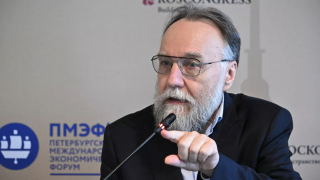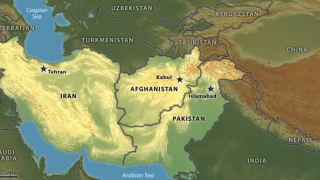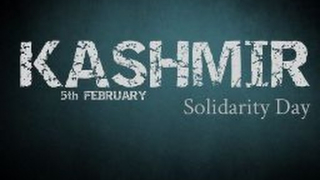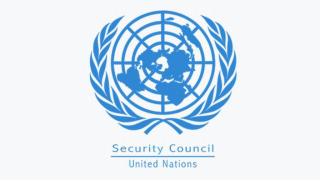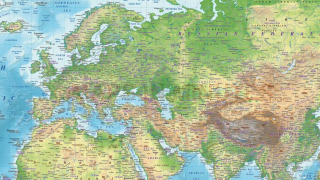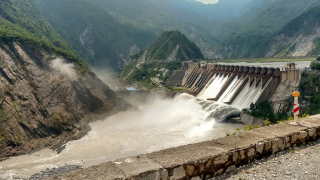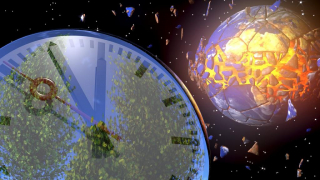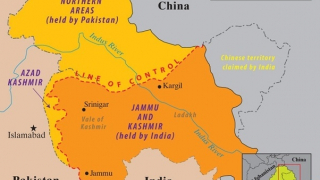March of Tears, How Lockdown in India Turned into a Tragedy
02.04.2020
After devastation in Wuhan, coronavirus was fast spreading to other countries in February. Although it had started penetrating India in mid-February, Modi was busy in hosting Donald Trump in a grand gala called Namaste Trump. Meanwhile a lot of religious and social gathering took place in small and large states of India including Holi in first week of March. When things started getting serious, Modi announced the Janta Curfew on 19th March with catchy words like ‘taali bajao,thali bajao’(clap or bang the utensils), the Bollywood mentality came into action with rich and poor sharing videos of claps, bells and thali banging to Modi’s official twitter account. Some got so excited that they came out in the streets and started celebrating the death of coronavirus, most did not realize that it was a Sunday and a normal day of less rush in any country.
The WhatsApp groups run by RSS became over excited and posted some scientific data claiming that NASA satellite telecast had shown that coronavirus had retreated from India, thanks to people’s effort at 5PM on 22nd March.
While this may sound like a cruel joke, the populism in India has turned 400 million voters of Modi into zombies and they have literally started believing in divine power of Modi as an Awatar (A prophet).
Modi’s second announcement came after few days with complete shutdown of India, virtually locking the mammoth of 1300 million Indians into a freezer. As time passed it dawned on the poor and hapless Indians that the rich and powerful had actually abandoned them to either stay in cities without work and pay, or move out to their villages and towns to be with their loved ones, after all rural India has some humanity left in the community.
Meanwhile police and Law enforcement agencies were seen beating and chasing the poor Indians. In Indian held Kashmir some elderly people were seen being beaten and one police officer was found threatening the people by using abusive language, not realizing that Kashmiris are in the lockdown since last 240 days.
In order to get the mood of common people we crowd sourced the research by browsing different social media platforms and individuals in India and it was interesting to find analysis by common Indians reflecting rage, anger, pain and helplessness.
One account called it a manmade humanitarian crisis. No other country has witnessed this mismanagement even with thousands & lakhs of Coronavirus cases. This is how good decisions without a proper implementation plan get botched up!
Another account criticized the diehard Modi followers and sated that ‘Bakths (Modi supporters) made only one big mistake and the mistake has messed up the country. We have a Home Minister who hates the country. Bakths you are responsible’.
Ramanan Laxmi Narayan, a lecturer at Princeton University, on the COVID crisis in India had a talk with Barkha Dutt. His research projection is that India should ready itself for 300-500 million cases by July end without drastic interventions and possibly between 1 and 2 million fatalities. He says "India has missed the bus on testing and all that can be done now is to protect the elderly." He calls for massive use of a simpler antibodies test that he says private practitioners can easily execute. He also calls for private companies like the Tatas to manufacture ventilators on a war footing.
While Modi took a drastic step without effective management of the fallout on 70% population living under or closer to poverty line, top brains of India are inadvertently supporting Pakistan and Imran Khan’s strategy that you cannot abandon the poor as it will create a snowballing effect that Government will not be able to handle.
There was a big gap between perception and reality, most probably Modi and his advisors thought that he could blow a whistle and everything will come to a halt and the system will keep running, not realizing that it’s the poor who runs the clogged machine called Shining India and it would collapse without the participation of the working class.
The lockdown in India was sudden, factories were shut, transport stopped, including trains and approximately 140 million poor workers were left with no jobs in large cities like Mumbai, Delhi, Bangalore and Kolkata. This resulted is a massive migration on foot; although Indian mainstream media was selective in covering the story, social media was rife with pictures and videos of a mass of human misery marching on the roads and exposing the cruelty of Indian State with the hapless and poor; we call it the ‘Indian March of Tears’. A study based on social media accounts suggests that about 10 million poor Indians are marching on foot to their towns and villages.
There were also reports of exhausted and tired families including kids sleeping on the roads and dying in appalling conditions. Reports of blame game between states and hungry people fighting with police are also emerging.
The chronology of events and decisions by BJP government smacks of lack of vision and basic planning. The announcement of 21 Days Lock Down came without any fore thought and forward planning. There was no consideration for arranging suitable transport for millions of poor who were suddenly left without jobs and food. This created chaos, confusion and panic in India and left an already divided society rudderless to act at will. There is an apparent biased attitude of government in handling the pandemic plagued by extreme inclination towards upper class Hindus and influential lot.
This disastrous move has actually compromised the very idea of social distancing, the poor Indian leaving the cities without any screening have become virus carriers and have fanned out across the India taking the virus to villages and towns.
The infusion of neo Nazi ideology had already polarized the Indian society, the apathy of rich and stigmatizing of poor as virus carriers has further expanded the gap between the rich and the poor. Instead of remaining ahead of the curve in this once in a hundred years’ crisis, Indian and states governments have gone into reactionary mode which may result in catastrophic consequences for its people.
Modi had to publically seeks 'forgiveness' from India's poor over COVID-19 lockdown; however, the state machinery has lost precious time and recovery from the pandemic may not be coming soon.
The poor were already crying in desperation and asking what kind of prime minister is this, who has put us into so much trouble.
While picking up the content from Indian media and social media accounts, some important rends and messages are being tabulated to show the extent of desperation in masses:
In an opinion piece published on Sunday in Indian express, Abhijit Banerjee and Esther Duflo - two of the three winners of the Nobel Prize in Economics in 2019 - said even more aid for the poor is needed. "Without that, the demand crisis will snowball into an economic avalanche, and people will have no choice but to defy orders," they wrote in the Indian Express.
"The Gov't had no contingency plans in place for this exodus," tweeted opposition politician Rahul Gandhi as images of migrant labourers walking long distances to return home dominated local media. #ModiMadeDisaster was a top trending topic in India on Sunday on Twitter. Police said four migrants died on the roads in Maharashtra. Also on Saturday, a migrant worker collapsed and died in the northern state of Uttar Pradesh, according to a police official.
"We will die of walking and starving before getting killed by corona," said migrant worker Madhav Raj, 28, as he walked along the road in Uttar Pradesh. Several hundred migrants in the town of Paippad, in southern Kerala state, gathered in a square demanding transport back to their hometowns.
To conclude, India’s march of Tears has exposed that fake populism and fascist ideology of RSS, duly supported by corporate India, has failed the Indian masses and it will take a while for common Indians to throw the yolk of slavery and fight for their basic rights.
It also highlights that catchy words like Lockdown and Curfew have very different implications for developing countries in South Asia. A sustained and gradual application of control measures can help the governments in maintaining a balance between poverty and disease control, it’s always a compromise.



